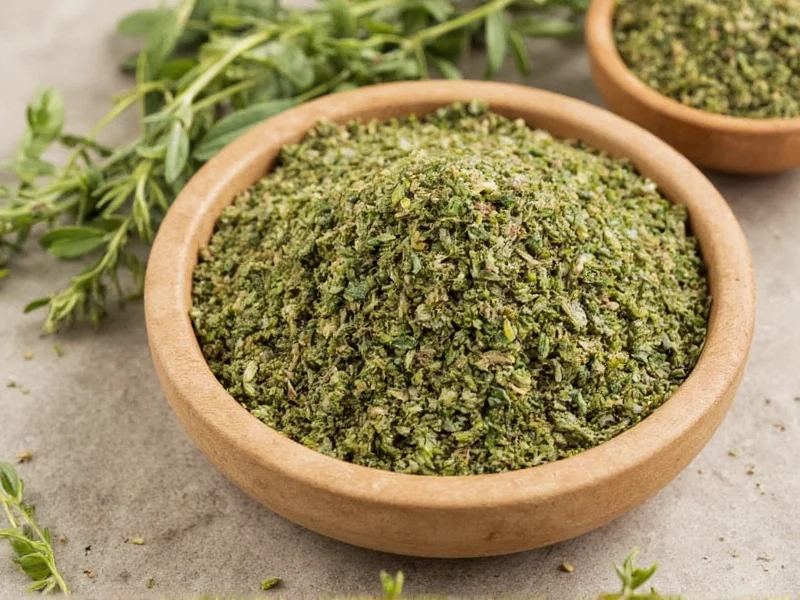When you need to substitute oregano, marjoram is the closest replacement (use 1:1 ratio), followed by Italian seasoning blend (use 1.5x amount). For Mediterranean dishes, thyme works well (use 1.5x), while basil suits tomato-based recipes (use equal amount). The best substitute depends on your specific dish and flavor profile needs.
Running out of oregano mid-recipe doesn't have to ruin your cooking. This versatile Mediterranean herb appears in countless Italian, Greek, and Mexican dishes, but several accessible alternatives can save your meal when your spice rack comes up short. Understanding which substitute works best for your specific recipe ensures your flavors remain authentic and balanced.
Why Oregano Substitution Matters
Oregano's distinctive earthy, slightly bitter flavor with peppery notes makes it essential in many Mediterranean and Mexican cuisines. Its unique chemical composition—particularly high levels of carvacrol—creates that signature herbal punch. When substituting, consider whether you're making pizza sauce, Greek salad, or chili, as different dishes require different flavor profiles.
Top Oregano Substitutes Ranked
Not all substitutes work equally well across all dishes. Here's how common alternatives compare for various cooking applications:
| Substitute | Best For | Substitution Ratio | Flavor Notes |
|---|---|---|---|
| Marjoram | General replacement, roasted meats | 1:1 | Sweeter, milder version of oregano |
| Italian Seasoning | Pasta sauces, pizza | 1.5x amount | Contains oregano plus complementary herbs |
| Thyme | Greek dishes, stews | 1.5x amount | More earthy, less peppery |
| Basil | Tomato sauces, caprese dishes | 1:1 | Sweeter, less pungent |
| Rosemary | Meat dishes, roasted vegetables | 0.5x amount | Stronger, pine-like flavor |
Best Substitutes for Specific Dishes
Pizza and Pasta Sauces
For tomato-based Italian dishes, Italian seasoning blend provides the most authentic flavor profile since it typically contains oregano plus complementary herbs like basil and thyme. If using individual herbs, combine equal parts basil and thyme (1:1 ratio) to mimic oregano's complexity. Dried mint (use half the amount) adds an authentic Greek pizza touch when combined with thyme.
Greek and Mediterranean Dishes
Traditional Greek recipes like souvlaki or spanakopita benefit most from thyme as an oregano substitute. Use 1.5 times the amount of thyme since it's less pungent. For tzatziki or Greek salads, add a pinch of dried mint alongside the thyme to capture that authentic Mediterranean essence. Marjoram works beautifully in lemon-herb chicken recipes where oregano would normally feature.
Meat Dishes and Chili
When making chili or seasoning meats, savory (summer savory) makes an excellent oregano replacement with its peppery notes. Use equal amounts. For grilled meats, combine equal parts thyme and rosemary (use half the total amount compared to oregano) to create a robust flavor profile. In Mexican chorizo or taco seasoning, cumin plus a touch of dried mint creates a surprisingly authentic substitute.
Substitution Ratios and Practical Tips
Getting the measurements right prevents your dish from becoming overpowering or bland. Remember these key principles when substituting oregano:
- Fresh vs. dried matters: If using fresh herbs instead of dried oregano, triple the amount (1 tsp dried = 1 tbsp fresh)
- Start small: Add half the recommended substitute amount first, then adjust to taste
- Consider cooking time: Delicate herbs like basil should be added near the end of cooking
- Balance with acid: A splash of lemon juice or vinegar can help mimic oregano's bright notes
What NOT to Use as Oregano Substitute
Some common herb substitutions create disappointing results. Avoid using dill in place of oregano—it creates an incompatible flavor profile for Mediterranean dishes. Similarly, cilantro works poorly as an oregano substitute despite both being used in Mexican cuisine; their flavor profiles differ significantly. Parsley lacks the necessary intensity and won't provide the characteristic herbal punch.
Creating Your Own Oregano Substitute Blend
For the most reliable results, make your own oregano replacement blend:
- Mix 2 parts dried marjoram
- Add 1 part dried thyme
- Include 0.5 parts dried basil
- For Greek dishes, add a pinch of dried mint
- For Mexican dishes, add a pinch of cumin
Store this blend in an airtight container away from light. Properly stored, it maintains freshness for 3-4 months. This homemade substitute works at a 1:1 ratio in most recipes calling for dried oregano.
When Substitution Isn't Enough
For dishes where oregano is the star ingredient—like classic Greek salad dressing or authentic Neapolitan pizza—substitutes may fall short. In these cases, consider these alternatives:
- Make a quick trip to the store for fresh oregano (often available in small pots)
- Check if a neighbor has some you could borrow
- Grow your own oregano plant (it's remarkably easy and drought-tolerant)











 浙公网安备
33010002000092号
浙公网安备
33010002000092号 浙B2-20120091-4
浙B2-20120091-4